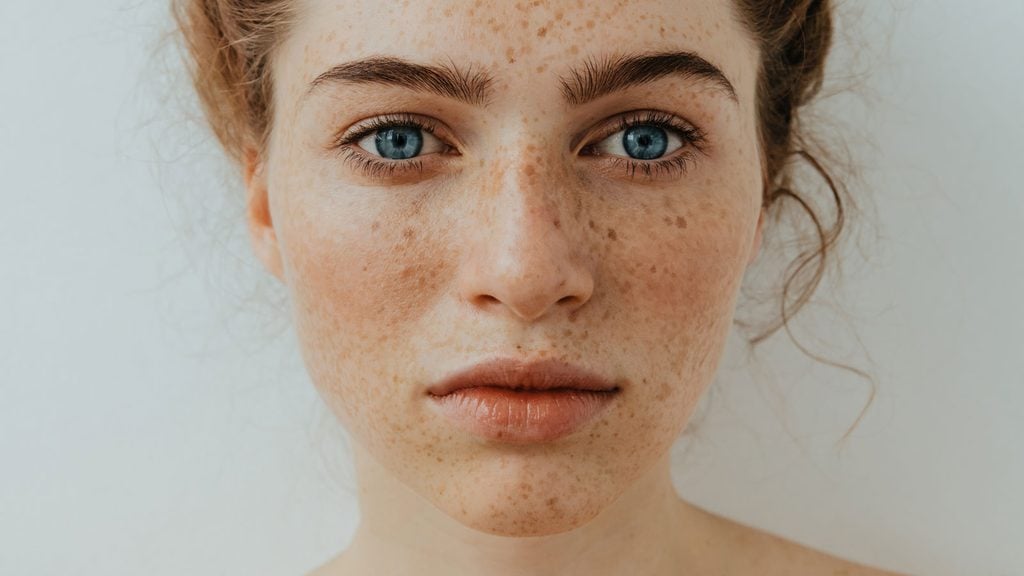How to Reduce the Damage of Sunspots

These treatment options are worth a try.
By the time I reached my mid-40s, my face was as speckled with sunspots as a ripe banana. I particularly loathed two dark brown blotches, both the size of a dime, by each eye. I covered them with concealer, but every year they became more noticeable. I wanted them gone. And I’m not alone. Here’s what you need to know about having them removed.
First, what kind of spot is it?
Some dark or coloured sunspots in medical terms—pigmented lesions or hyperpigmentation—are harmless. Others, however, can be disfiguring or deadly, particularly non-melanoma skin cancers (whether basal or squamous cell cancers), which strike roughly 76,100 Canadians and kill 440 each year; and melanoma, which strikes an estimated 7,200 Canadians and takes 1,250 lives each year. Before removing a spot, a dermatologist should assess it to discern benign spots from potential cancers. “I have at least one patient a week come in for what they think is a cosmetic removal and it turns out to be cancer,” says Dr. Mark Lupin, a dermatologist in Victoria.
The wrong treatment “could delay a cancer diagnosis, with potentially disastrous results,” cautions Dr. Jean-François Tremblay, a Montreal dermatologist.
Two types of harmless brown lesions that are common for cosmetic removal.
The first type is solar lentigines, a.k.a. “age spots,” “sunspots” or “liver spots”; these are collections of cells containing higher than normal concentrations of melanin. They are flat; either beige, brown or black; and up to about two centimetres in diameter. (Learn 3 other common signs of skin aging.) The second type is seborrheic keratoses, a.k.a. “brown warts” or “senile warts”; these are raised, usually brown (though sometimes white or black) and waxy, looking stuck on. Sometimes the two types can be combined in one spot. That was true for me. The spot under my left eye was a solar lentigo; the one on the right was a combination.
Treatment options:
Creams
Many cosmetic companies now offer fade creams that usually contain hydroquinone (a bleaching agent), retinol, or botanical agents such as soy. Prescription fade creams, with higher concentrations of these substances, are available through dermatologists. The creams are intended to fade sunspots and lighten overall skin tone. They work for some people, but they didn’t fade my spots. (Also, check out the skincare ingredients you should be using all over your body.)
Liquid nitrogen (LN)
The ultra-cold (-196°C) LN can freeze off lentigines and keratoses, creating a shallow scab that eventually falls off. In terms of side effects, some patients have skin discolouration (for example, a lightening that does not match your skin tone). It is the most common method for removing seborrheic keratoses and has the added benefit of being relatively inexpensive.
My brown wart was frozen with LN. It felt like a blast of cold, then a little sting. It crusted, healed in seven days, then remained pink for a few weeks, but eventually was completely gone, leaving no scar.
Lasers
A variety of lasers, of different wavelengths, are available that can zap lentigines. Lupin prefers a device called a Q-switched laser for this type of procedure, but other lasers work, too. He lasered the lentigo under my left eye, and the lentigo part of the spot beside my right (after doing LN). It felt like rapid, intense, stinging pinpricks for a microsecond. It was red for a day, then darkened into a scaly spot. Within five days, both spots were gone, leaving no scar. Make sure the procedure is done by a skilled dermatologist, nurse or technician; otherwise, burns or permanent scarring could occur.
Intense Pulsed Light (IPL) or Broadband Light (BBL)
These are two different names for the same technology. A laser focuses a single wavelength of light; by contrast, IPL/BBL focuses many wavelengths, which are absorbed by the coloured pigments of the skin, destroying them. Also called “photorejuvenation,” this method is usually done to lighten the whole face over three to five sessions, one month apart. As with lasers, make sure the procedure is done by a skilled practitioner.
Thanks to laser and liquid nitrogen, the sunspots I had loathed for a decade are gone, and I couldn’t be happier. Now I’m wearing SPF 50 daily in the hope that no new ones appear.
This article was originally published in the September 2014 issue of Best Health.




